Curator: Tan Zeen
Stage and Light Design of Kun Opera Praying the Moon: Xiao Ye
Listed as one of the four great South Dramas, Praying the Moon is set in the late Jin dynasty when Mongolia marched to the south, and tells a story of misplaced accompany between a lost sibling and a lost mother and her daughter. The mother met across Ruilian Jiang and made herself as a godmother to Jiang; The brother Shilong Jiang married the daughter Ruilan Wang. This couple happened to meet Zhen Wang- Shilong Jiang’s father-in-law at a post. Zhen Wang was infuriated after acknowledging that his daughter married a poor pedant, so he managed to tear them apart and took his daughter away. Years later, the country was ephemerally tranquilized after negotiating with Mongolia. Imperial examination was resumed in Jin Dynasty to recruit a wide range of talents. Shilong Jiang studied hard for it and got the top in the examination. He found Ruilan and the couple was reunited happily.
When recreating the original version of the play, this script emphasizes the happy ending to the satisfaction of all. Therefore, description of the incomplete moonlight covers in each scene, and the shape of moon is designed as the main visual image. The designer creates the image for the new, the first quarter, the remnant and the full moon through the control of the LED strip light to show the sorrow, reunion and perfect conjugal bliss. First, by controlling the light beads and moving the moon halo, it allows the emotion such as wax and wane, the fading of time, vicissitudes of life to flow out.
Second, Kunqu opera is focused on ‘elegance’ as the most ancient opera in China, and it possess full-bodied cultural atmosphere. According to that, the whole space is designed as a long white scroll to depict the ancient characters appearing in it with sky and ground white.
Third, wire-frame is selected as the type of space structure applying to the entire process. Its predestined relationship origins from the cover of cultural relics in the museum. Kunqu opera is an intangible cultural heritage. When being performed in a space decorated and defined with wire-frames, the audience will feel like they are watching a precious treasure in a museum. Hereby, translucent heat transfer cloth and black wire-frame are used as material to manifest layers of transparent glass cover, which will produce a hazy effect on appearance.
Talking about the contemporary performance of Chinese opera for a designer, I am convinced it is essential to activate the traditional elements with new materials and techniques based on Chinese traditional art spirit.
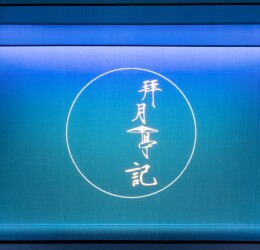
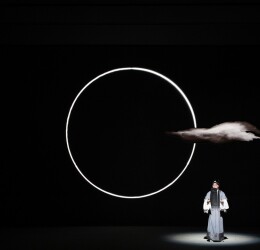
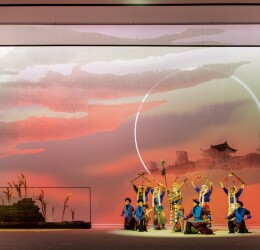
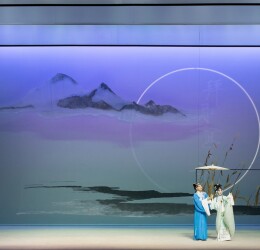
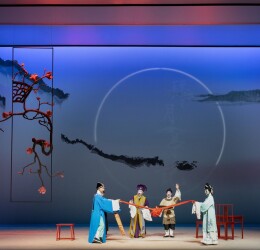
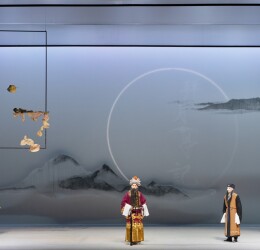
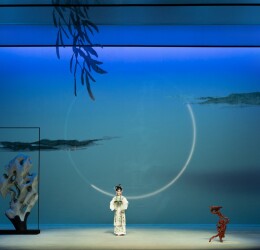
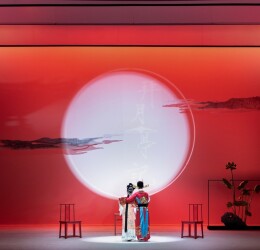
Ye Xiao
Enrolled at Stage Design Department of Shanghai Theatre Academy in 2018.
Lighting designer of the Kunqu opera Praying the Moon in 2012, which won repertoire award at the fifth ‘Chinese Kunqu Opera Festival’; Lighting designer of the Kunqu opera Bao Dai Hong Lou and won the award of Light Design in Shanghai Institute of Stage Design; Won the award of Light Design at China Stage Art Society Lighting Design Award on its third exhibition in 2015 and obtain the title as the national top ten young designers in China. At the same time, the works was involved into the 2016 edition of International Professional Lighting Equipment OMNIBUS; Stage designer of Beijing People in 2018 and won the award for Stage Design artworks in Shanghai Institute of Stage Design; In 2019, it’s recognized as Excellent Student in the Advanced Research Class for Cultivating Artistic Talents in Opera sponsored by the Ministry of Culture and Tourism; In 2021, it’s awarded by the Emerging Designer Award in the Fourth China Stage Art Society Lighting Design Exhibition.

